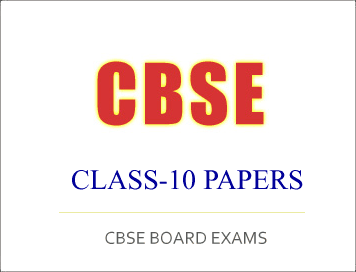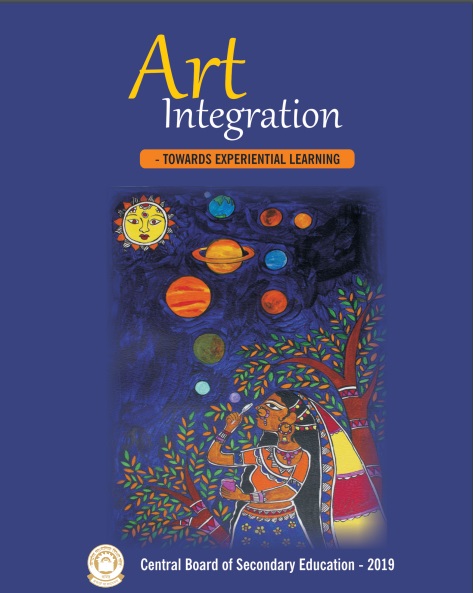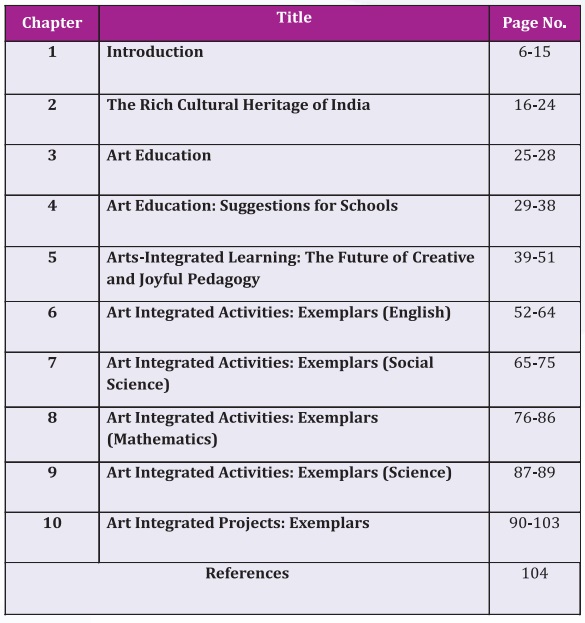| (Download) CBSE Class-10 Sample Paper And Marking Scheme 2017-18 : (Hindustani Music:Melodic) Posted: 07 Dec 2020 03:41 AM PST 
(Download) CBSE Class-10 Sample Paper And Marking Scheme 2017-18 : (Hindustani Music:Melodic) Time Allowed: 03 hours Total Marks: 25 5x5 marks Instructions: i. Attempt all questions. Internal choice is given in every question. Answer any one question from the alternative given.
ii. All questions carry equal marks.Define the following: 1. Aalap, Tana, Meend, Kan, Murki.
OR
Describe any two of the following Talas and write their Thekas with Dugun in tala Notation: Tilwada, Sultala, Chautala 2. Describe any Two of the following in detail:Dhrupad, Masitkhani Gat, Dhamar, Razakhani Gat. 3..Describe the origin and development of the instrument opted for.
OR
Describe the structure and tuning of any one instrument given in your syllabus. 4. Write in notation a Maseet Khani Gat in any one Raga from your syllabus.
OR
Write in notation a Razakhani Gat in Khamaj Raga or Des Raga. 5. Describe any Two of the following Ragas in detail:Bhupali, Khamaj, Durga
OR
Give the life sketch and contributions of Ustad Allaudin Khan or Ustad Inayat Khan to Indian Music. Courtesy:CBSE  |
| (Download) CBSE Class-10 Sample Paper And Marking Scheme 2017-18 : (Social Science) Posted: 07 Dec 2020 03:40 AM PST 
(Download) CBSE Class-10 Sample Paper And Marking Scheme 2017-18 : (Social Science)
Time Allowed: 3 Hours Maximum Marks: 80
General Instructions: i. The question paper has 27 questions in all. All questions are compulsory.
ii. Marks are indicated against each question.
iii. Questions from serial number 1 to7 are very short answer type questions. Each question carries one mark.
iv. Questions from serial number 8 to18 are 3 marks questions. Answer of these questions should not exceed 80 words each.
v. Questions from serial number 19 to 25 are 5 marks questions. Answer of these questions should not exceed 100 words each.
vi. Question numbers 26 & 27 are map questions from History with 1 mark each.
vii. Question number 28 is map question of 3 marks from Geography.
viii. For Q. Nos. 26, 27 and 28 (map based questions) one outline political map of India is provided. After completion the work, attach the map inside your answer book.
ix. Questions at Serial Number - 20, 22, 24 & 25 have Internal Choice. Attempt any one option out of the given in each of these questions. 1. Which power dominated the nation-building process in Germany?
OR
Which idea, other than economic exploitation, was behind French colonisation of Vietnam? 1
2. State an important characteristic of the oldest Japanese book, Diamond Sutra.
OR
State the hotly debated issue around which the novel Indulekha revolved. 1
3. Wind energy received in abundance in western Rajasthan and Gujrat has not been so far utilised and developed to the maximum. It falls in which category of resources? 1
4. Write any one prudential reason for which power sharing is desirable. 1
5. Identify the condition when both the parties in a barter economy have to agree to sell and buy each other‟s commodities? What is it called? 1
6. A group of companies in India wishes to import high quality ACs from South Korea but have to pay a huge import tax on them which would make the ACs very expensive leading to a decline their sale. Ascertain the role of the import tax in this situation. 1
7. Sania buys a packet of biscuits and finds detail about ingredients used, price, batch number etc. printed on it except the expiry date. Under which right of the consumers she can claim to know this information from the manufacturer? 1
8. Ideas of national unity in early-nineteenth-century Europe were closely allied to the ideology of liberalism. What did it mean for the middle class in France? Explain.
OR
The French used school textbooks in Vietnam to justify colonial rule. Explain. 3
9. “Not everyone welcomed the printed book, and those who did also had fears about it.” Justify the statement by giving three arguments.
OR
“Colonial administrators found „vernacular‟ novels a valuable source of information on native life and customs.” Prove the statement by giving three evidences. 3
10. Explain any three reasons for which the multi-purpose projects and large dams have come under great scrutiny and opposition in the recent years.3
11. Mohan owns a farm in Uttar Pradesh; he wishes to cultivate either Jute or Sugarcane. He shall cultivate which crop out of these two keeping in mind the conditions required for their growth? Explain. 3
12. Distinguish between the Unitary and Federal systems of government. 3
13. “Three factors are crucial in deciding the outcome of politics of social divisions.” Elaborate upon the statement.3
14. Do democracies lead to peaceful and harmonious life among citizens? Clarify. 3
15. Mohit is 28 years of age, has 65 kg of body weight and is 1.4 meters tall. Calculate his BMI. Find out whether he is under nourished or over weight. Why? 3
16. Amrita is a government employee and belongs to a rich urban household whereas Rani works as a helper on a construction site and comes from a poor rural household. Both have a crisis at home and wish to take loan. Create a list of arguments explaining who between the two would successfully be able to get the loan from a formal source. Why? 3
17. How can the government ensure that globalisation is fair and its benefits are shared in a better way by all? 3
18. Create an advertisement for an online Consumer Awareness campaign to help consumers know their rights and save themselves from exploitation. 3
19. Illustrate with examples that food offers many opportunities of long-distance cultural exchange.
OR
“Even before factories began to dot the landscape in England and Europe, there was large-scale industrial production for an international market in the country side.”Elucidate.
OR
“The function and the shape of the family were completely transformed by life in the industrial city.” Clarify the statement with regard to urbanization that happened in England in the 18th century. 
Click Here To Download Full Sample Paper Click Here To Download Full Marking Scheme CBSE (Class X) Previous Year Papers Printed Books <<Go Back To Main Page
Courtesy:CBSE  |
| (E-book) : Art Integration - Towards Experiential Learning Posted: 06 Dec 2020 08:46 PM PST |



